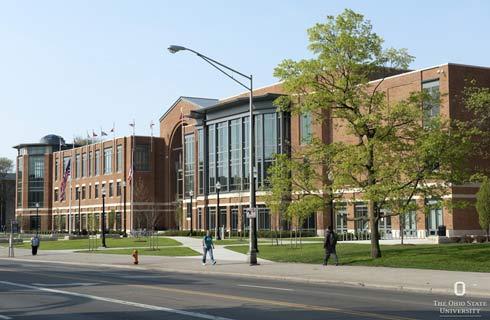国际学生入学条件
IDP—雅思考试联合主办方

雅思考试总分
6.5
- 雅思总分:6.5
- 托福网考总分:88
- 托福笔试总分:160
- 其他语言考试:Pearson Test of English (Academic) – 69
CRICOS代码:
申请截止日期: 请与IDP联系 以获取详细信息。
课程简介
You will undertake a physics research project over two years (MPhil) or three years (PhD), supported by our globally esteemed researchers. The project will be shaped by your participation in research activities such as seminars, workshops, laboratory activity and fieldwork, as well as your involvement in one of our established research groups. Swansea is a research-led University and physics makes a significant contribution, meaning you will benefit from the considerable experience and skills of our expert staff. We have three main research groups. The Atomic, Molecular and Quantum Physics Group (AMQP) is supported by grants from EPSRC, the EU, The Royal Society, the Higher Education Funding Council for Wales and various industrial and government sources. The areas of research are: Analytical laser spectroscopy, , Ultrafast Dynamics, Imaging and Microscopy, Optomechanics, Antihydrogen, positronium and positrons, Cold atom physics and Nano-scale physics and the life sciences. The Applied Physics and Materials (APM) Group is supported by grants from the European Union, Welsh Government, National Science Foundation, Australian Research Council, Welsh European Funding Office, and EPSRC. The areas of research include: Biophotonics: Nano- and micro-structured materials, biomimetics, analyte sensing and light-tissue interaction, Nanomedicine, Sustainable Advanced Materials: next-generation semiconductors, bioelectronic materials and devices, optoelectronics including photodetection, solar energy conversion and advanced electro-optics and transport physics of disordered solids. The Particle Physics and Cosmology Theory (PPCT) Group is one of the five largest particle physics groups in the UK. It is supported mainly by STFC, but also has grants from EPSRC, the EU, the Royal Society and the Leverhulme Trust. The areas of research include: Amplitudes in gauge and supergravity theories, Hot and Dense matter, High-performance computing , Gaugestring duality, Higher spin holography, Integrability, Large-N gauge theories, supersymmetry and duality, Holography and lattice theories in physics beyond the Standard Model and Quantum fields in curved spacetime and theoretical cosmology.This PhD in Physics at Swansea will enable you to undertake a substantial project led by you. It is a highly respected qualification which is a necessary step in a career in academia, and also will open a wider scope for employment in fields such as education, government or the private sector. A thesis will be submitted for assessment demonstrating original research with a substantive contribution to the subject area. The PhD title is awarded following a successful oral examination of the thesis (a viva voce examination or viva voce). You will acquire research skills for high-level work and skills and training programmes are available on campus for further support. There will be opportunities to deliver presentations to research students and staff at departmental seminars and conferences. There may also be opportunities to develop your teaching skills through undergraduate tutorials, demonstrations and seminars.
相关申请
 预科
预科 奖学金
奖学金 实习机会
实习机会 在校学习
在校学习 跨境学习
跨境学习 校园授课-线上开始
校园授课-线上开始 在线/远程学习
在线/远程学习
开学时间&学费
学费信息仅供参考,请与IDP联系以获取详细信息
| 开学时间 | 时长 | 学费 | 地点 |
|---|
学校排名

世界排名251
数据源:
泰晤士高等教育世界大学排名
关于斯旺西大学

斯旺西大学位于英国威尔士西南海岸的美丽海滨,以其研究声誉、杰出的学生支持和卓越的教学知名。斯旺西大学拥有两个校区,均坐落于风景秀丽的海滨。斯旺西大学提供一系列本科、研究生和研究型学位,其中一些学位提供出国工作和学习的机会。来自100多个国家的学生在斯旺西就学,该校拥有一个多元化的学术团体。 这所研究型大学成立于1920年,在英国大学排名中位列前29位(《卫报》2025年大学指南),100%的受访学生推荐斯旺西大学(UniCompare 2025)。斯旺西大学以其开创性的研究成果解决现实世界的问题而自豪。该校就业能力学院为学生和毕业生招聘人员牵线搭桥,受到了高度赞扬。学校致力于为毕业学生提供最好的就业机会。斯旺西大学的两个校区都靠近繁华的市中心。斯旺西市被《2024年完全大学指南》评为英国第七大最安全的学习地点。这座充满活力的城市拥有众多餐厅、咖啡馆、博物馆和其他文化景点供学生探索。两个校区的学生只需步行、乘坐公交车或骑自行车即可轻松抵达繁华的市中心。斯旺西大学支持学生积极出行,提供斯旺西大学自行车租赁服务,年租自行车仅需10英镑。斯旺西拥有众多艺术画廊和博物馆,魅力十足,独具特色。
本校相关课程

MPhys(荣誉)理论物理学
学历文凭
Bachelor Degree
开学日期
课程费用总额


理学士(荣誉)物理学(国外)
学历文凭
Bachelor Degree with Honours
开学日期
课程费用总额


工学(荣誉)计算
学历文凭
Undergraduate Masters
开学日期
课程费用总额


理学士(荣誉)理论物理学
学历文凭
Bachelor Degree with Honours
开学日期
课程费用总额


理学学士(荣誉)纯数学
学历文凭
Bachelor Degree with Honours
开学日期
课程费用总额


理学士(荣誉)物理学与粒子物理学和宇宙学
学历文凭
Bachelor Degree with Honours
开学日期
课程费用总额

其他相关课程

理学学士(物理学)荣誉
 伊迪斯科文大学
伊迪斯科文大学学历文凭
Bachelor Degree with Honours
开学日期
课程费用总额


理学学士(荣誉学位)-物理学
 伍伦贡大学
伍伦贡大学泰晤士高等教育世界大学排名:247
学历文凭
Bachelor Degree with Honours
开学日期
课程费用总额


哲学硕士(物理)
 科廷大学
科廷大学泰晤士高等教育世界大学排名:256
学历文凭
Masters Degree (Research)
开学日期
课程费用总额


哲学博士(物理)
 纽卡斯尔大学
纽卡斯尔大学学历文凭
Ph.D.
开学日期
课程费用总额


理学学士(高性能计算物理)(荣誉学位)
 阿德莱德大学
阿德莱德大学学历文凭
Bachelor Degree with Honours
开学日期
课程费用总额


理学学士(空间科学和天体物理学)
 阿德莱德大学
阿德莱德大学学历文凭
Bachelor Degree
开学日期
课程费用总额










 英国
英国




